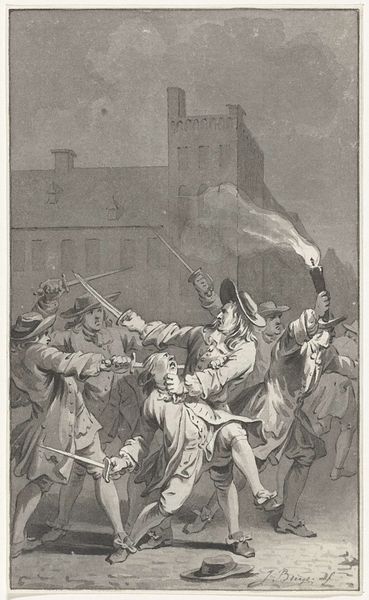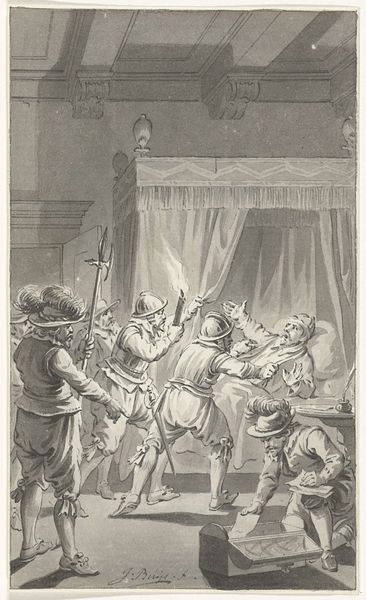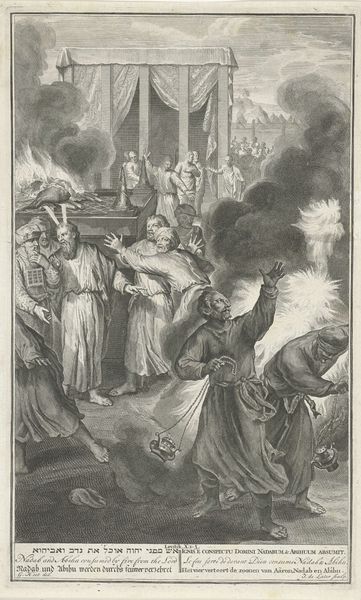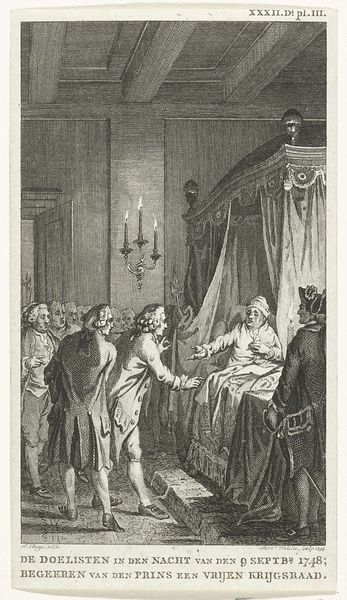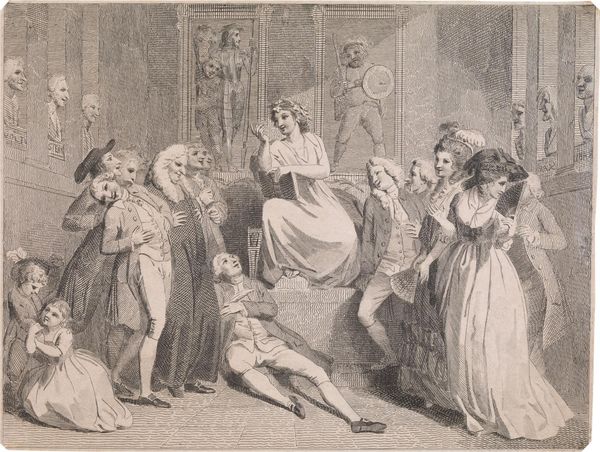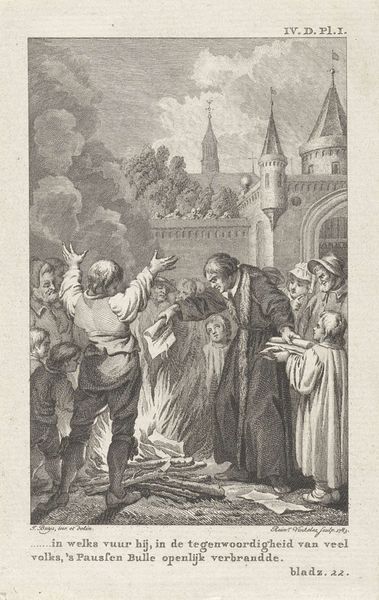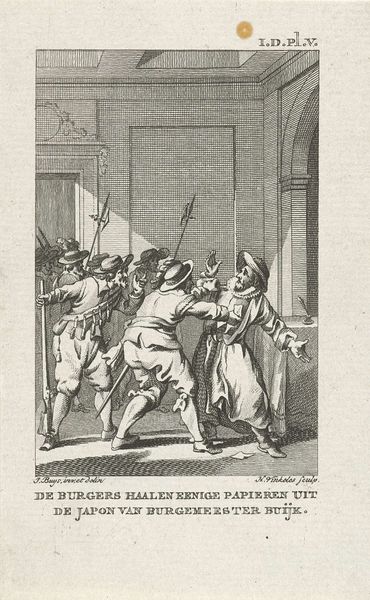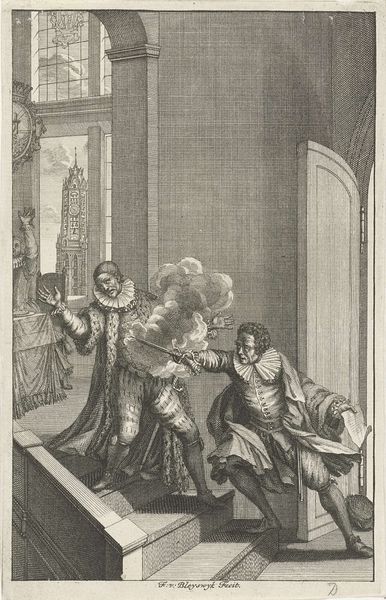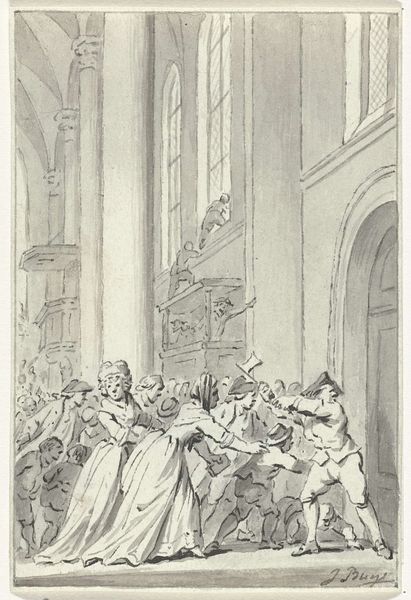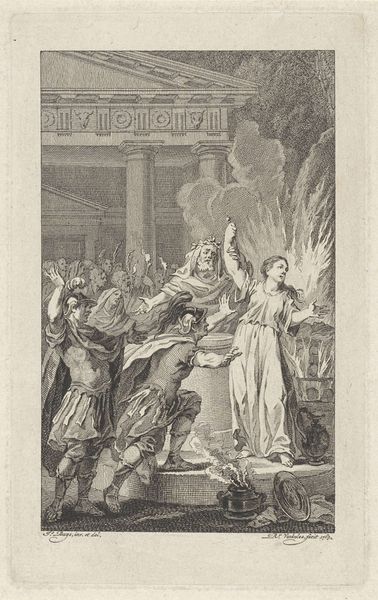
De moord op Aleid van Poelgeest in haar kamer, 22 september 1392 1792 - 1794
0:00
0:00
jacobusbuys
Rijksmuseum
drawing, paper, ink, engraving
#
drawing
#
neoclacissism
#
narrative-art
#
paper
#
ink
#
history-painting
#
engraving
Dimensions: height 149 mm, width 90 mm
Copyright: Rijks Museum: Open Domain
Curator: The emotional weight in this image is palpable; it almost feels suffocating. Editor: Yes, well, it's hard to miss the drama. Here we have Jacobus Buys' engraving, "The murder of Aleid van Poelgeest in her room, 22 September 1392," likely created between 1792 and 1794. It’s currently housed here at the Rijksmuseum. Curator: What strikes me is how the figures, illuminated by the flickering torchlight, seem trapped in this awful moment. There’s such graphic violence depicted. I see fear, rage… it’s a potent brew of dark energies swirling around that central figure. Editor: Absolutely. The scene illustrates a politically motivated assassination. Aleid van Poelgeest was the mistress of Albert I, Duke of Bavaria. Her murder triggered a civil war in Holland. You can really feel the chaos inherent in violent power struggles of the late Medieval period. Curator: It is also remarkable how he’s used light and shadow to enhance the mood. The men holding the torches are cloaked in darkness from the background, with an implied presence as the violence is enacted against an isolated, vulnerable, white dressed, innocent in her room. This contrasts starkly with the almost theatrical drama of the assassination. The men brandish torches, but does the illumination serve as enlightenment, exposing secrets, or rather a grotesque stage spotlight to this senseless murder? Editor: Right. This engraving emerges from the Neoclassical period, which often revisited historical subjects for moral or political instruction. Though ostensibly illustrating a past event, Buys surely intended for contemporary viewers to reflect on issues of power, justice, and the consequences of political intrigue. The distribution of prints like this helped construct popular understandings of Dutch history. Curator: The symbols! Even in the engraving technique, one sees layers. Those men forcing their way into her space can be seen to signify an almost primal disruption of domesticity, with all that domesticity may represent regarding female autonomy, order and security in the traditional familial unit. In contrast to her delicate, white robes there is the aggressors’ hard metallic armor. This clash between delicacy and brutality underscores the profound violation enacted in this chamber. It's a scene etched, quite literally, into our cultural memory. Editor: Precisely. And to close, I think, the continued resonance of Buys' print lies in its potent combination of historical narrative and skillful depiction of violence, fear and those lingering political implications, offering us a glimpse into a pivotal moment in Dutch history. Curator: Leaving us pondering on cycles of power, the vulnerability of individuals, and those shadows that haunt history's grand stage.
Comments
No comments
Be the first to comment and join the conversation on the ultimate creative platform.
